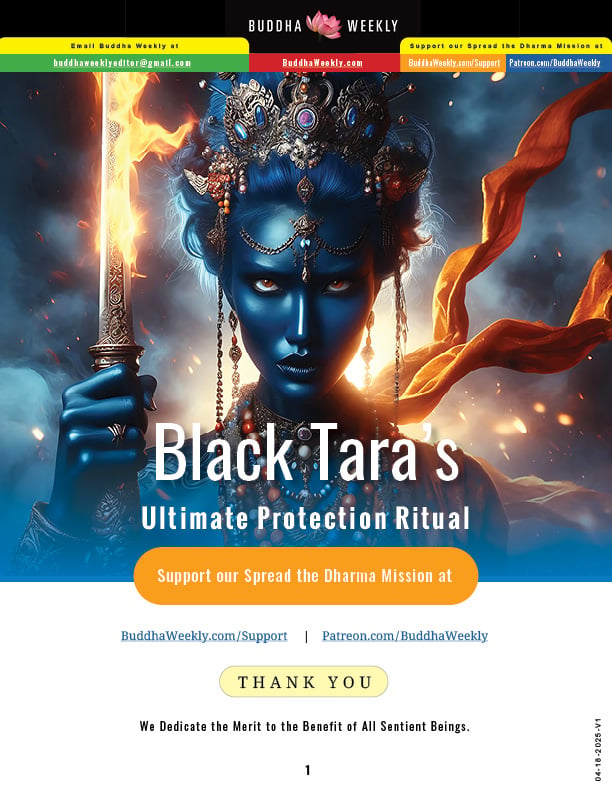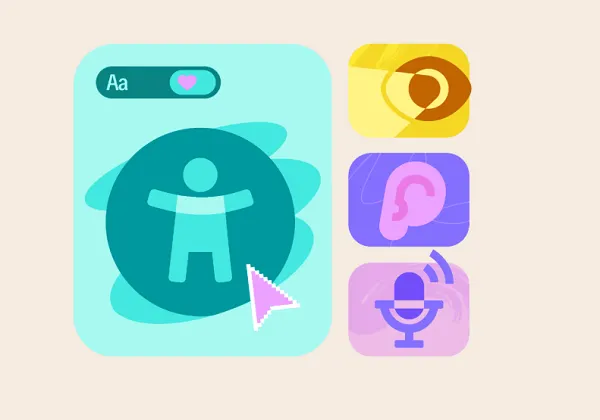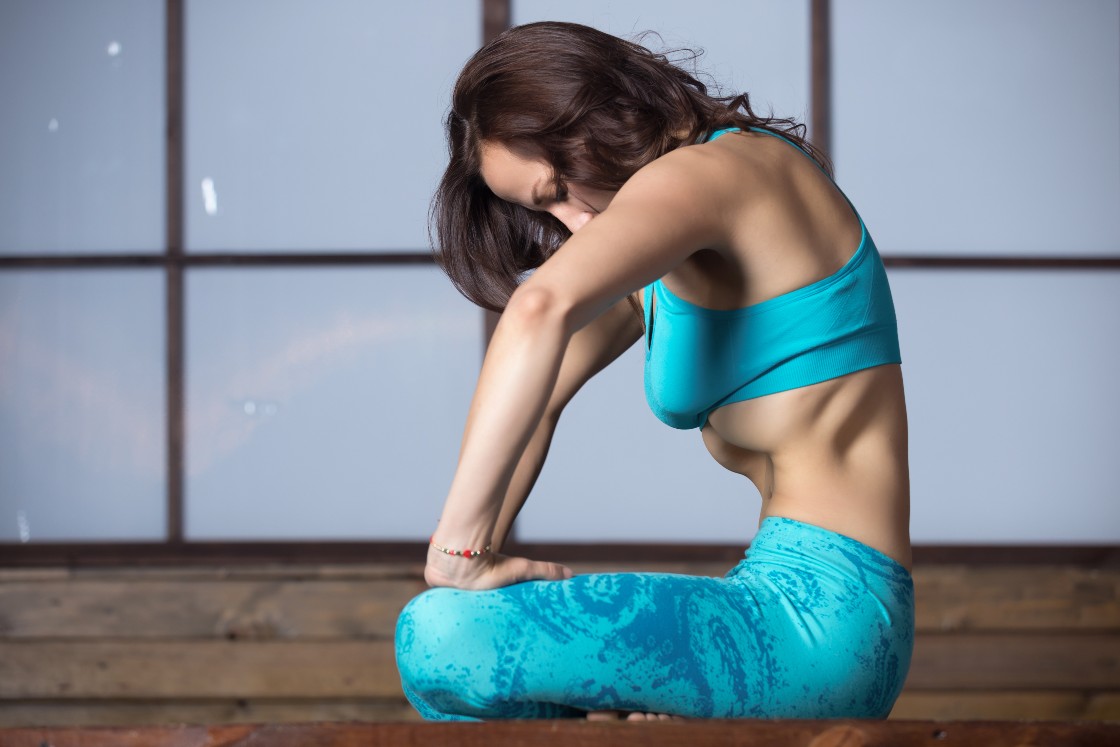A Practice of Trust
A trans Zen student wrestles with questions of identity and belonging and eventually finds refuge in community. The post A Practice of Trust appeared first on Tricycle: The Buddhist Review.

During my residency at Fire Lotus Temple, I could most often be found sitting on a couch in the common space, reading a book. This was not only because I love books but also because I couldn’t quite figure out the schedule, and figured that sitting in the common space would give me the least chance of missing something and getting in trouble.
I was 21 and at a loss. I had always focused on being a good student, daughter, sister, girlfriend, activist—and while sometimes those identities came into conflict (for example, my parents were not thrilled when I dyed my hair blue), it was not too hard to logically determine their order of importance to me in any given moment, and figure out the correct action accordingly.
In the same way, I wanted to pour myself into being a good Zen student. Good Zen students were silent, unless they were supposed to talk, in which case they were welcoming and conversational. Good Zen students followed the rules, unless they didn’t, in which case they seemed to rebound appropriately from any consequences that came their way. Good Zen students were on time and remembered to clean up their breakfast dishes. Good Zen students weren’t afraid of the abbot and asked good questions in dokusan. I tried to do these things, but there were ever more rules and I didn’t feel like a good student at all. I felt like a massive failure.
Underlying my difficulty with these rules—some external, like the breakfast dishes, some wholly self-imposed—was the fact that I simply didn’t know who I was. I didn’t know anything other than following the rules and acting the way I believed I ought to, based on my goals and principles. I didn’t know what I, personally, wanted to do, how I, personally, would act if I were to act naturally. I had never explored that. It had not occurred to me to do so.
As I struggled at the temple, another resident looked out for me. She said everyone made mistakes and found residency difficult sometimes. She got me to talk when I preferred to hide behind a book. “Just be yourself,” she’d say. “Who else can you be?”
But I felt unintelligible, as though I couldn’t explain myself even to myself. This was especially true in terms of my gender. People seemed to assume that I was a lesbian, but I didn’t feel like a lesbian. I liked men and I felt genderqueer. It was hard to explain so I usually didn’t bother. I preferred to take up as little space as possible; it reduced the risk that I would mess anything up or upset anyone.
In the temple, always meeting and interacting with other residents and sangha, it was harder to hide. I went to dokusan and told my teacher, “I feel like I’m lying with my body. Everyone thinks I am a woman, but I don’t feel like a woman.” I didn’t realize that I was coming out to him as trans; I just thought I was saying what was on my mind. But in that moment, I saw that I needed to transition. I was scared, but it didn’t change the reality of what I had seen about myself.
In the next several months, I changed my name, my clothes, and my IDs and started on hormones. My sangha was supportive but confused, and was generally bad about remembering my pronouns. I felt like I must be the only transgender Buddhist. I certainly felt exotic in my sangha, unusual, hard to understand, an interesting learning experience for everyone.
My first sesshin, I was asked nicely if I might stay in the women’s dorm. My body was thought to be a distraction in the men’s dorm, and single rooms were needed for those with medical concerns. I’d wake up each morning, very early, and feel momentarily confused, then flooded with nausea and anger to find myself surrounded by sleepily dressing women. I couldn’t believe they thought I belonged there.
Through the long days of zazen, I would dwell on this. Talks were the worst—the speaker might address the illusory nature of reality and I would sit there and burn. How could they speak of reality in this way, but not understand the illusory nature of gender?
I didn’t know what to do. I was angry, hurt, and scared. I wanted to stay, to study the dharma, but I didn’t know if I could, nor if I was welcome. I wanted to fit in, to be a good Zen student, but that seemed impossible given my gender situation. I felt that I would constantly be the other, the odd one out, the troublemaker.
Underneath those concerns was that persistent question—can I do it? Do I have buddha-nature? Can I practice and wake up, here in this body, this mind, this community that can’t reliably get my pronouns right? I was sure enough that I stuck around, but I kept worrying at these questions, like picking at a scab.
My concern about belonging wasn’t just about gender; it was also about sexuality, community, and friendship. Saturday evenings I’d put on sparkly makeup and a flashy outfit, then hide it under a robe for evening zazen before heading out to a queer party.
Can I practice and wake up, here in this body, this mind, this community that can’t reliably get my pronouns right?
At these parties, I was like Cinderella—I’d always leave at one, sharp, because I never wanted to miss Sunday service at the temple. Religious practice was not well understood in my social circle, but they were laid-back about it.
Sometimes I feared that my teacher wouldn’t be able to help me. I worried we were so different that we couldn’t understand each other, that our words would mean such different things that they might as well be different words. I envied those sangha members who had more in common with their teacher—surely it was easier for them.
Things changed in summer 2013—I finally made some trans Buddhist friends. Although I had met Chance Krempasky at a trans conference more than a year earlier, and knew he was also a trans Buddhist, I had put off reaching out. He and Audrey Renson, another trans Buddhist, were about to start working on a guide for retreat centers about welcoming trans practitioners. They shared many of my experiences—being called repeatedly by the wrong name and pronoun, confusion about housing arrangements, and dharma talks that assumed no one was trans.
We worked for months writing, revising, and getting input and help from other trans Buddhists and allies. Over the months I worked with Chance and Audrey, I healed. When I talked about sangha, they understood. When I talked about relationships, queer parties, or Buddhist texts, they understood. With them, I didn’t feel exotic. I started to have a new experience—feeling like me.
When we released our guide, “Developing Trans* Competence: A Short Guide to Improving Transgender Experiences at Meditation and Retreat Centers,” in March 2014, I felt so tender, so afraid of messing up, just like my first days in the temple—not sure if I had everything right, but not knowing how to do any better.
We started hearing from trans Buddhists from all over. So many different places, ways of practicing, stories, but many of the same concerns—reconciling being trans with teachings on non-self, practical considerations with the sangha, practicing compassion for oneself and others. Instead of feeling caught between communities, I began to feel I had several.
I am starting to see that the value I have to offer does not come from how I can enact any particular role—Zen student, son, partner, even trans Buddhist activist—but is inherent and unique.
I stayed with my sangha; we grew and changed over the years, as sanghas do. Our trans Buddhist sangha is changing and growing as well. Flourishing, even.
And I continue practicing just being myself, which is fundamentally a practice of trust. But really, who else can I be?
♦
From Transcending by Kevin Manders and Elizabeth Marston (anthology editors), published by North Atlantic Books, copyright © 2019 by Kevin Manders and Elizabeth Marston. Reprinted by permission of North Atlantic Books.

 JimMin
JimMin 































